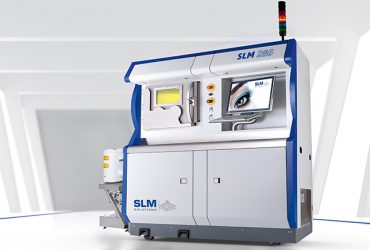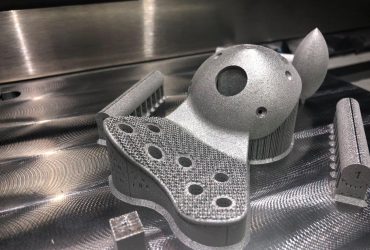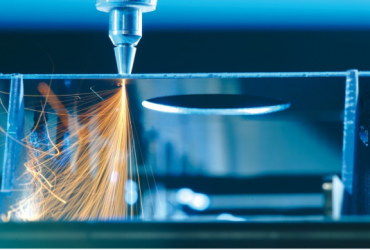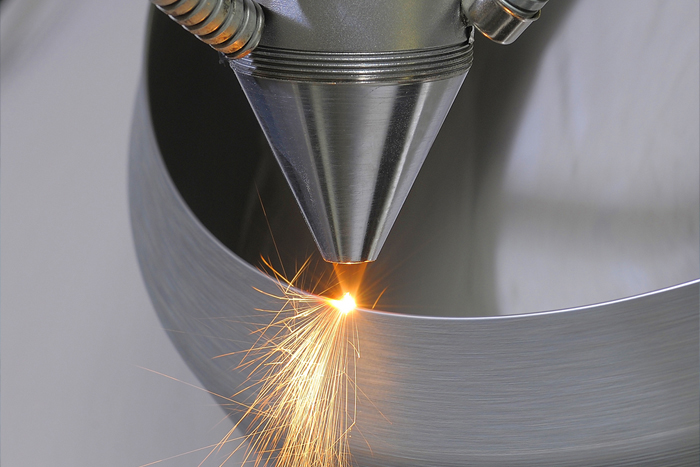
Why additive manufacturing is redefining product design
Additive manufacturing is redefining product design by revolutionizing how metal products are made. This frees designers from previous constraints on the types of geometries that can be achieved. With additive manufacturing the sky’s the limit.
Additive manufacturing uses metal powder or wire to produce metallic products by means of three-dimensional printing (3D printing) technology. The Selective Laser Melting (SLM) technique, whose popularity looks set to grow enormously in the coming years, works by melting layer upon layer of metal powder using a laser.
Because it deposits material only where it is needed, the 3D printer is ideally suited to making intricate, lightweight shapes for complex, high-value applications. As a result, the impact of additive manufacturing is expected to be most notable in the automotive industry, as well as in aerospace and medicine, although it can be used across most metal manufacturing segments.
Moisture and oxygen are the two most crucial parameters when it comes to creating optimal conditions for 3D printing. Maintaining an inert atmosphere becomes more critical depending on how reactive the material is.
-Bo Williamsson
Opportunities with additive manufacturing
Applying additive manufacturing to production opens up a variety of challenges and opportunities. While the cost of investing in and using an industrial 3D printer is comparatively high, compared with more traditional methods, there are obvious gains to be made.
Read more about the Linde Global Development Centre for Additive Manufacturing
For example, the 3D printer can make complex geometries from less material, so material usage and waste is reduced. As for the final result, end users will reap the rewards of operating a part that is stronger, lighter, more energy efficient and, last but not least, more beautiful.

Additive manufacturing is often referred to as 3D-printing, where one “prints” details layer by layer using a laser and metal powder. Alternative power sources and additives may be used though.
Additive manufacturing and product design
Bo Williamsson, Manager Laser and Additive Manufacturing with Linde Region North, says the advantages of additive manufacturing far outweigh the drawbacks.
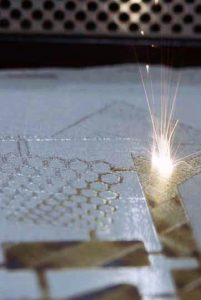
A high-power laser beam is scanned over a bed of powder, sintering the powder into the required shape, in the path of the laser beam. After each layer, the bed is lowered by a short distance and a new layer of powder applied. This technique is suitable for smaller components where precision is a key requirement.
“While the industry still has a lot to learn about this technique, one thing that’s certain is that it has made it possible to print geometries that could never have been produced before. Additive manufacturing gives designers complete freedom to create very precise characteristics in terms of structure, strength, weight, aesthetics and aerodynamic properties,” he explains, adding that time-consuming processes that used to involve multiple production stages can be printed in one single sequence.
Across the globe, innumerable advances will be made possible as a result of additive manufacturing. For example, Williamsson explains that aircraft engines could be made significantly lighter by changing the design and using a 3D printer in manufacturing its components.
Other examples include the production of tailor-made implants, transmission details, prototyping, and development of components for Formula 1 cars, customised bicycle frames and so on. The possibilities, Williamsson says, are infinite.
Linde and the rise of additive manufacturing
If you look inside the process chamber of the 3D printer, where the metal powder is melted layer by layer with a laser in an inert atmosphere to create a three-dimensional detail, you will find that it is similar in many ways to the process of welding. Process gases such as Argon are also used to create the optimal atmosphere for the 3D printing process.
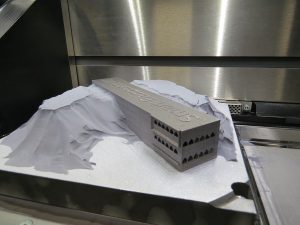
3D printed item made from metal powder using ADDvance technology from Linde. Remaining powder being removed from piece. Image courtesy of Trumpf
This is why companies like AGA and Linde, with their unrivalled experience and knowledge of gas, metallurgy and welding, are fast establishing themselves as preferred partners to the additive manufacturing industry.
Fact box
Linde Global Development Centre for Additive Manufacturing
In 2017, Linde Group set up its own Linde Global Development Centre for Additive Manufacturing in Unterschleissheim, near Munich, Germany. The research team here focuses on the effects that different process gases and gas mixtures have on the various metal powders used in additive manufacturing.
Click here to read more about Lionde & additive manufacturing

